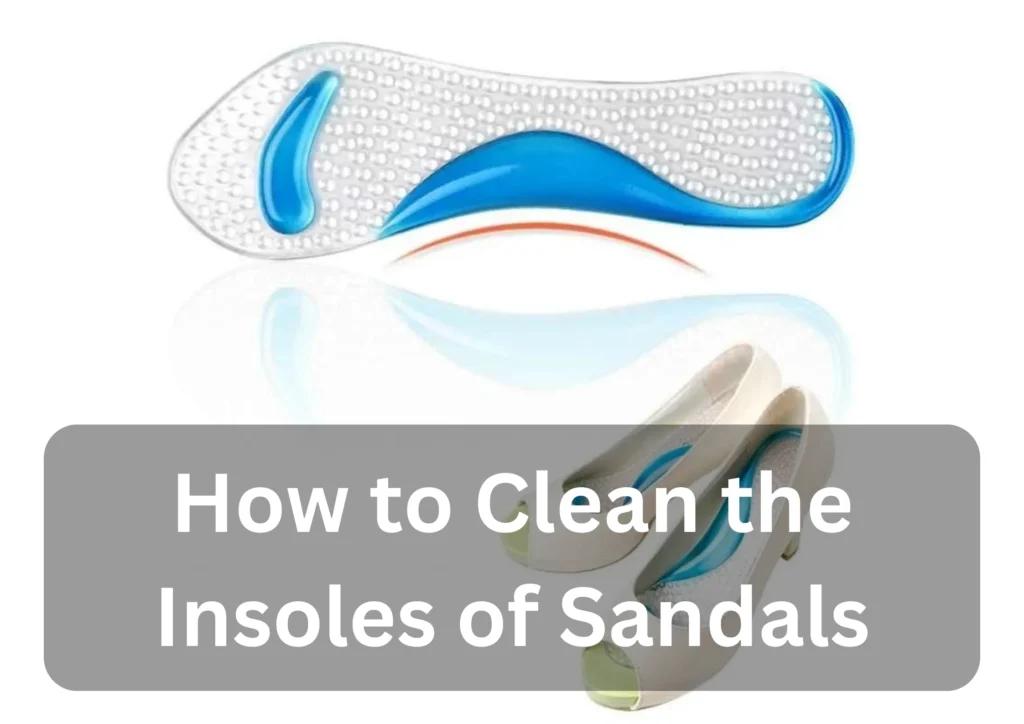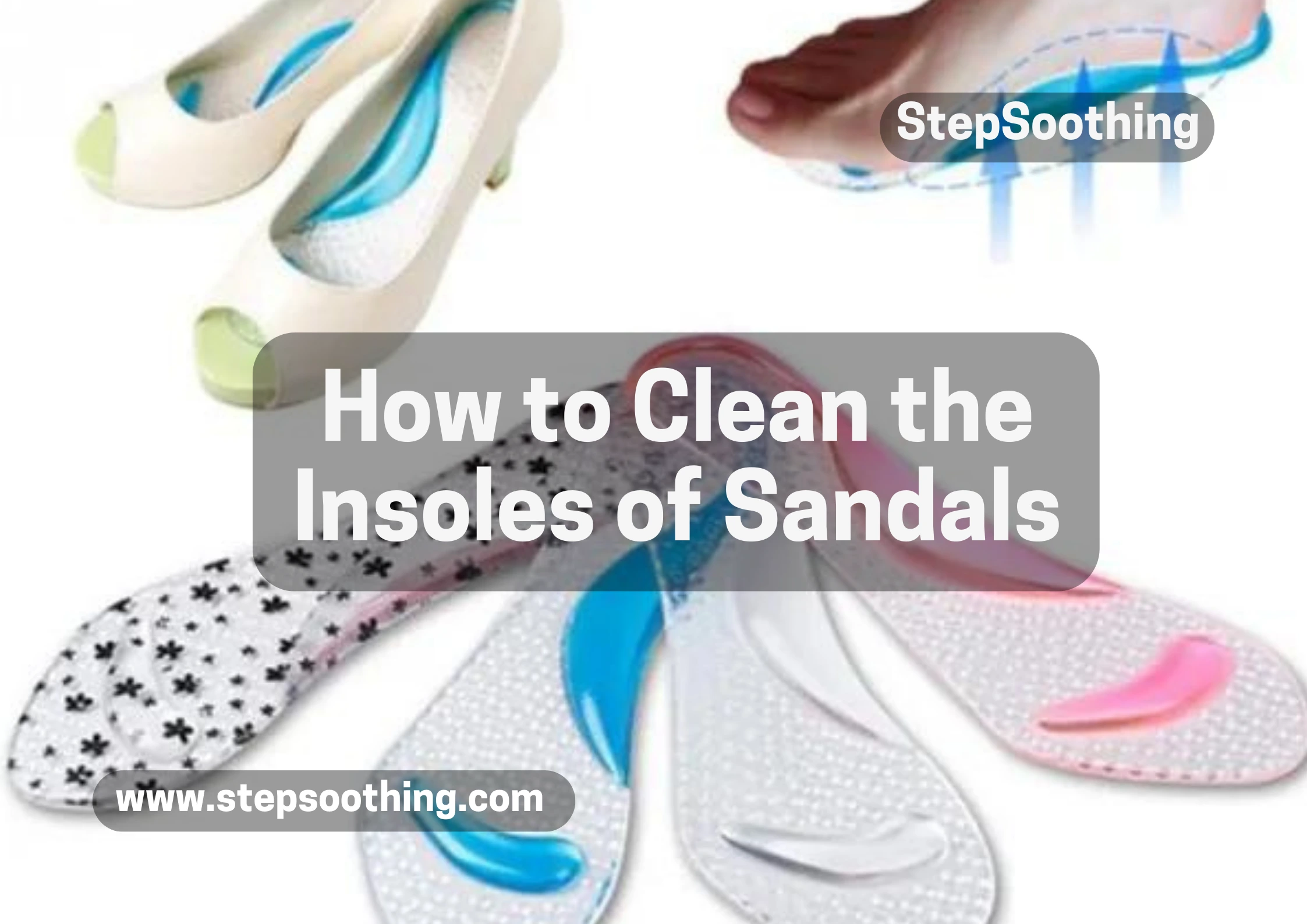Sandal insoles endure a lot—sweat, dirt, and daily wear make them prone to odors and stains. Regular cleaning not only extends the life of your sandals but also ensures better foot hygiene and comfort. This comprehensive guide will walk you through the importance of cleaning sandal insoles, step-by-step cleaning methods, and tips to keep them fresh longer.
Ultimate Guide to Cleaning Sandal Insoles

Why You Should Clean Your Sandal Insoles Regularly
Over time, sandal insoles accumulate:
- Sweat and oils – Creating a breeding ground for bacteria and fungi
- Dirt and grime – Leading to discoloration and bad odors
- Dead skin cells – Causing hygiene issues and reducing the lifespan of your sandals
Neglecting insole maintenance can result in persistent foot odors, infections, and even material breakdown. Cleaning them at least twice a month prevents buildup and keeps your feet healthy.
Step-by-Step Guide: How to Clean Sandal Insoles
1. Gather Your Cleaning Supplies
Before starting, make sure you have: ✔ Soft-bristled brush or old toothbrush – For gentle scrubbing
✔ Mild detergent or dish soap – Safe for most materials
✔ Lukewarm water – Prevents damage while cleaning
✔ Baking soda – Neutralizes odors and lifts stains
✔ White vinegar – Works as a natural antibacterial solution
✔ Leather shampoo – Necessary for leather insoles
✔ Microfiber cloth or paper towels – Helps wipe excess moisture
2. Remove the Insoles (If Possible)
Many sandals have removable insoles. Taking them out allows for a more thorough cleaning. If your insoles are non-removable, clean them inside the sandal carefully.
3. Dry Brush to Remove Loose Dirt
Use a soft-bristled brush to scrub off any dried dirt, dust, or dead skin cells before applying water. This prevents spreading grime further during cleaning.
4. Wash with Mild Soap and Lukewarm Water
- Mix a few drops of detergent with lukewarm water.
- Dip a microfiber cloth into the solution and gently wipe the insoles.
- For deeper stains, use a soft-bristled brush in circular motions.
- Avoid soaking insoles, especially if made from suede, cork, or leather.
For leather insoles, check out this detailed cleaning guide to avoid damage.
5. Deep Clean for Stubborn Stains
For persistent stains, use:
- Baking Soda Paste – Mix baking soda with water, apply to the stain, and scrub gently.
- White Vinegar Solution – Mix equal parts vinegar and water, then dab with a cloth or brush.
- Suede or Leather Insoles – Use a suede brush or leather shampoo instead of water to prevent damage.
6. Deodorize & Eliminate Odors
To keep your insoles smelling fresh:
✅ Sprinkle baking soda generously and leave overnight, then brush off.
✅ Use an antibacterial shoe refresher spray.
✅ Wipe insoles with a vinegar-dampened cloth to neutralize lingering smells.
7. Rinse & Air Dry Properly
🚫 DO NOT submerge insoles in water – This can weaken glue, warp foam, or damage leather.
💨 Air dry for 24 hours in a cool, dry place.
☀ Avoid direct sunlight or heaters, as they can dry out materials like rubber, suede, and polyurethane.
Troubleshooting Common Insole Issues
✔ Discolored Insoles? Use a vinegar-water mixture and wipe with a soft cloth.
✔ Persistent Odors? Store insoles in a sealed plastic bag with baking soda overnight.
✔ Can You Machine Wash Insoles? ❌ No! Machine washing can destroy the structure of insoles. Always hand clean for better longevity.
How to Maintain Fresh & Clean Insoles
✅ Routine Cleaning – Clean insoles every two weeks to prevent bacteria buildup. If you wear sandals daily, consider weekly cleaning.
✅ Alternate Between Sandals – Rotating between sandals allows each pair time to dry properly.
✅ Use Cleaning Kits – A shoe cleaning kit with a suede brush, microfiber cloth, and antibacterial spray keeps insoles fresh.
✅ Proper Storage – Store sandals in a cool, dry place. Stuffing them with newspapers helps absorb excess moisture.
For more insole care tips, read how to fix worn-out insoles.
Understanding Different Insole Materials & How to Clean Them
Different insole materials require specific cleaning approaches:
✔ Leather Insoles – Use leather shampoo and a damp cloth. Avoid excess water, as it damages leather fibers.
✔ Suede Insoles – Brush gently with a suede brush. Remove stains using a cloth dipped in vinegar (never water!).
✔ Cork Insoles – Use a damp cloth with mild soap. Avoid excessive moisture, as it can cause cork to crack.
✔ Foam & Rubber Insoles – Wash with soap and water. Baking soda paste helps lift stains and remove odors.
If you’re wondering whether insoles are worth the effort, explore the benefits of using insoles.
When to Replace Your Sandal Insoles
Even with regular cleaning, insoles don’t last forever. Watch for these signs: ❌ Flattened foot contour – No longer provides proper support.
❌ Lingering odors – Smells persist despite thorough cleaning.
❌ Worn-out material – Cracks, peeling, or excessive softness.
If you notice any of these, consider replacing your insoles or sandals for better foot health. You can also read how to choose the right insoles to find a better fit.
DIY Natural Cleaning Solutions vs. Commercial Products
🌿 DIY Natural Cleaners
✅ Eco-friendly
✅ Budget-friendly
✅ Non-toxic
🛒 Commercial Cleaning Products
✅ Faster results
✅ Designed for specific materials
✅ Longer-lasting protection
Verdict? For regular cleaning, DIY methods work well. For deep stains or odor removal, a professional shoe cleaner may be necessary.
People Also Ask about How to clean the Insoles of Sandals
Can I clean my sandals with just water?
Yes, but for effective results, use mild soap or baking soda.
How often should I clean my insoles?
At least every two weeks, more often in hot weather.
Can I use bleach to clean insoles?
No, bleach damages materials and can cause discoloration.
How do I prevent my insoles from smelling?
Use baking soda, store in a ventilated area, and clean regularly.
Final Thoughts
By following these safe and effective cleaning techniques, you’ll keep your sandals fresh, odor-free, and long-lasting. Whether your insoles are leather, suede, cork, or rubber, regular maintenance ensures better foot hygiene and greater comfort.
Start your cleaning routine today and enjoy fresher, healthier feet!



